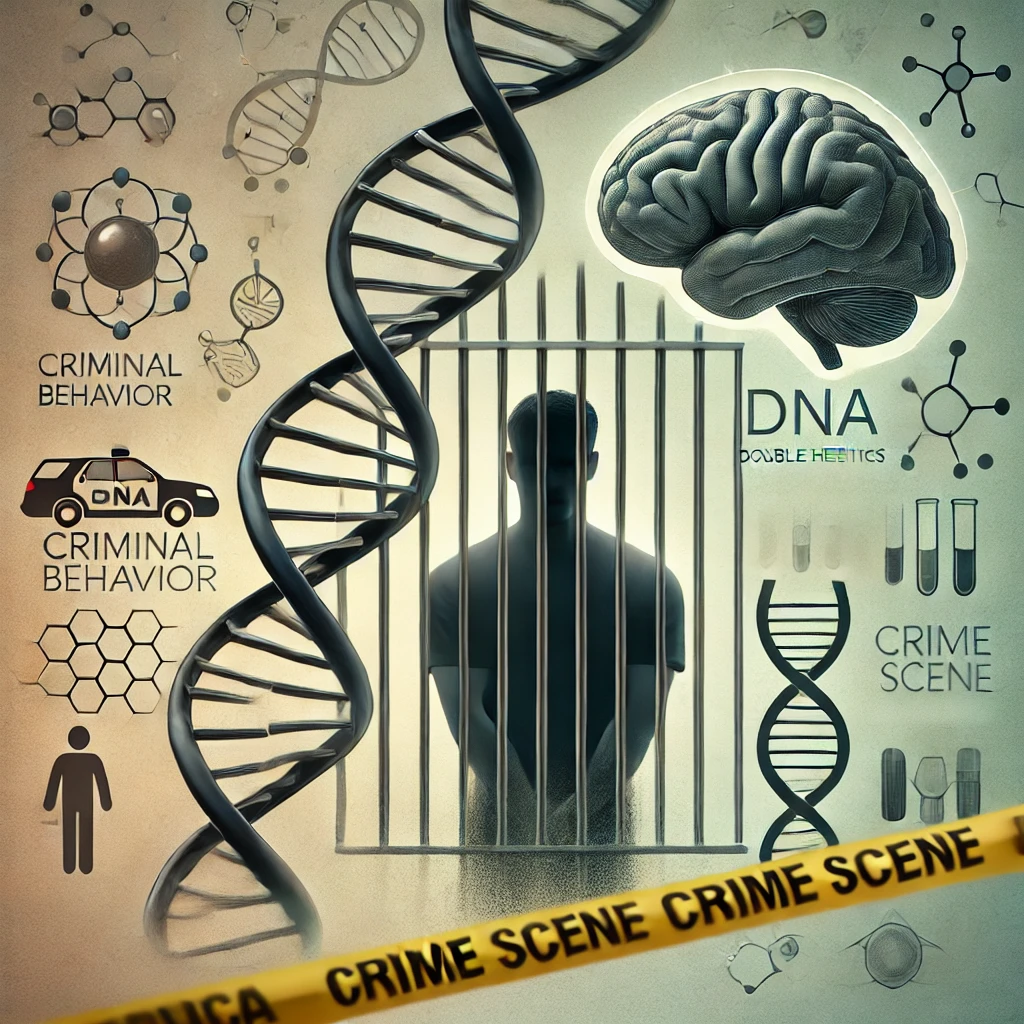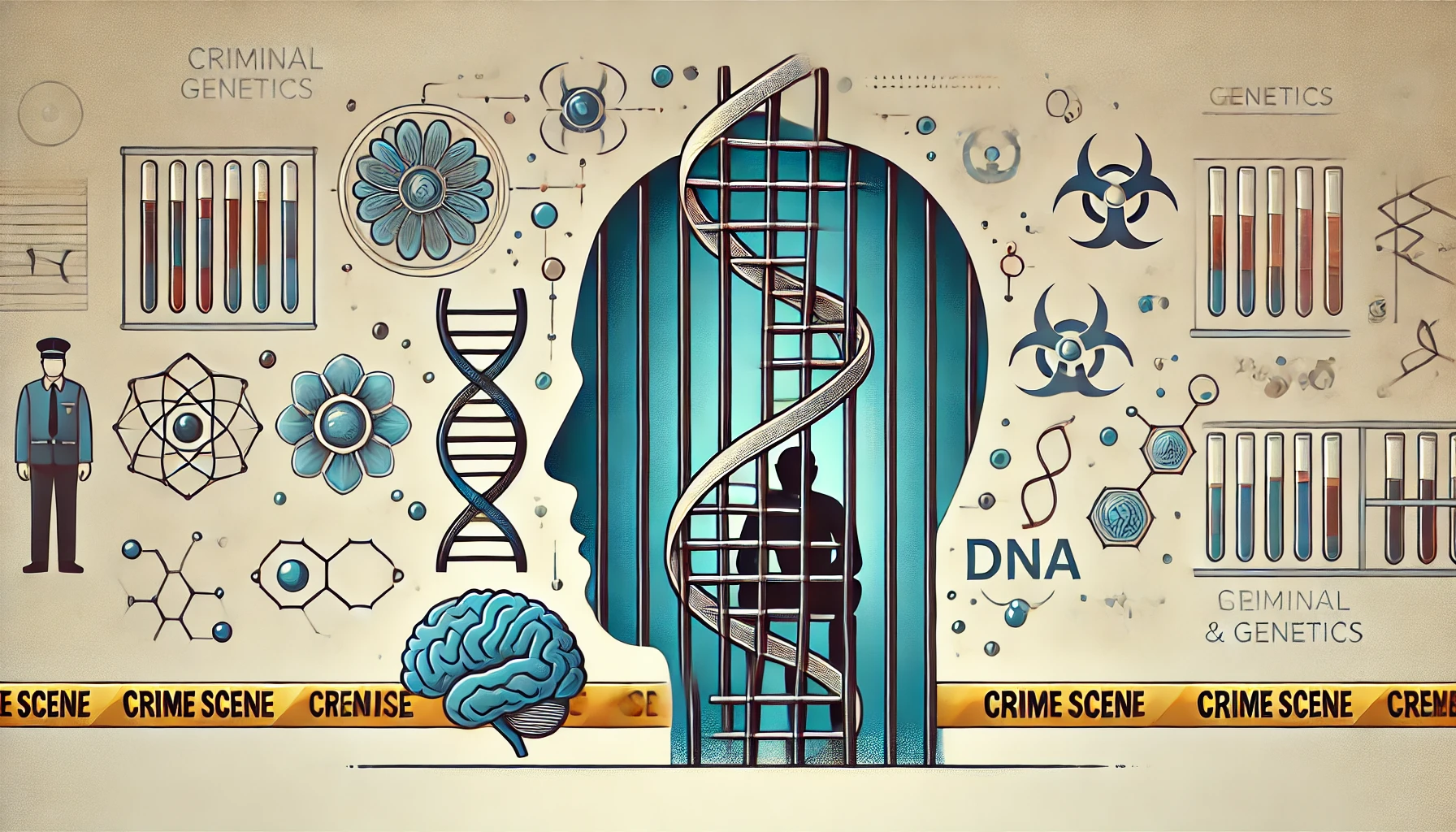The relationship between criminal behavior and genetics is a fascinating area of research that seeks to uncover the biological underpinnings of actions that violate societal laws and norms. While crime has traditionally been analyzed through social and psychological lenses, the role of genetics has gained increasing attention as scientists delve deeper into the complexities of human behavior. This article explores the scientific connection between criminal tendencies and genetic factors, examining the interplay between heredity and environmental influences.
Genetics and Criminal Behavior: An Overview
Genetics refers to the study of inherited traits passed from one generation to the next through DNA. In the context of criminology, researchers investigate whether certain genetic predispositions might increase an individual’s likelihood of engaging in criminal activities. This area of study does not imply that genes alone determine criminal behavior but rather highlights the potential influence of genetic factors alongside environmental and social conditions.
Evidence from Twin and Adoption Studies
- Twin Studies
Twin studies have been instrumental in understanding the genetic basis of criminal behavior. Identical twins (monozygotic), who share the same genetic makeup, often exhibit higher concordance rates for criminal behavior compared to fraternal twins (dizygotic), who share only about 50% of their genes. These findings suggest a potential hereditary component to criminal tendencies. - Adoption Studies
Adoption studies provide additional insights by separating genetic influences from environmental ones. Researchers have observed that adoptees with biological parents who had a history of criminal behavior are more likely to engage in criminal activities themselves, even when raised in non-criminal adoptive families. This reinforces the notion that genetic factors may contribute to such behaviors.
The Role of Specific Genes in Criminal Behavior
- MAOA Gene (Warrior Gene)
One of the most studied genes in relation to aggression and crime is the MAOA gene, which regulates the breakdown of neurotransmitters such as serotonin and dopamine. Variants of the MAOA gene, particularly the “low-activity” variant, have been linked to increased aggression and impulsivity, particularly in individuals exposed to adverse childhood environments. - DRD2 and Dopamine Receptors
The DRD2 gene, associated with dopamine receptor function, has also been implicated in criminal behavior. Studies suggest that individuals with certain DRD2 gene variants may exhibit impulsivity and a higher susceptibility to substance abuse, which can indirectly contribute to criminal activities.
Interaction Between Genetics and Environment
It is crucial to emphasize that genetic predispositions do not act in isolation. The interaction between genes and the environment plays a significant role in shaping criminal behavior. For instance:
- Childhood Trauma: Individuals with a genetic predisposition for aggression may only exhibit criminal tendencies when exposed to abusive or neglectful environments.
- Social Influences: Access to education, family stability, and peer relationships can either mitigate or exacerbate the impact of genetic predispositions on behavior.

Critiques and Ethical Considerations
- Determinism vs. Free Will
One of the main criticisms of genetic studies on criminal behavior is the risk of biological determinism—the idea that individuals are destined to commit crimes due to their genetics. This perspective undermines the role of personal agency and social interventions. - Ethical Concerns
Using genetic information to predict criminal behavior raises ethical concerns about privacy and potential discrimination. There is a risk of stigmatizing individuals based on their genetic makeup, which could lead to unjust treatment or social exclusion.
Applications of Genetic Research in Criminology
Despite the challenges, genetic research has significant potential in criminology, including:
- Early Intervention: Identifying individuals at higher risk for criminal behavior can help design targeted interventions to address environmental risk factors.
- Rehabilitation Programs: Understanding the biological roots of aggression can aid in developing personalized rehabilitation strategies for offenders.
- Preventive Policies: Insights from genetic studies can inform policies aimed at reducing risk factors for crime, such as poverty and child abuse.
Conclusion
The relationship between criminal behavior and genetics is a complex and multifaceted area of study. While genetics may contribute to an individual’s propensity for criminal behavior, it is always influenced by a broader context of environmental, social, and psychological factors. Scientific research in this field holds great promise for understanding and addressing the root causes of crime, but it must be approached with caution to avoid ethical pitfalls and ensure that its applications promote fairness and justice.

